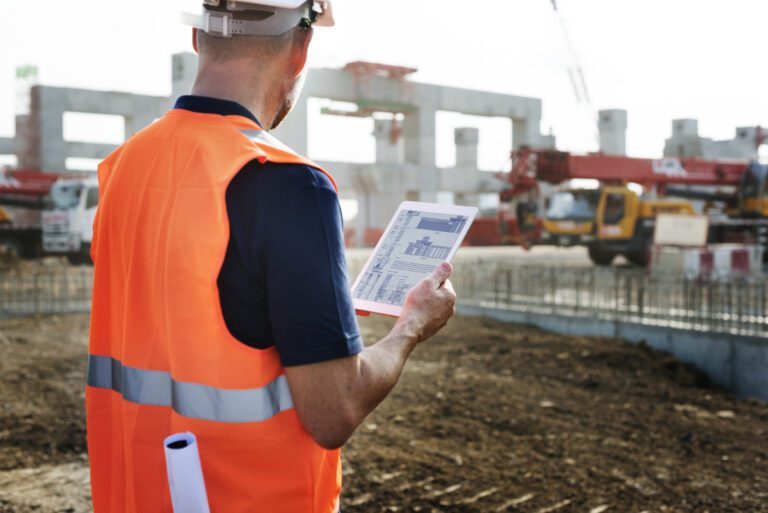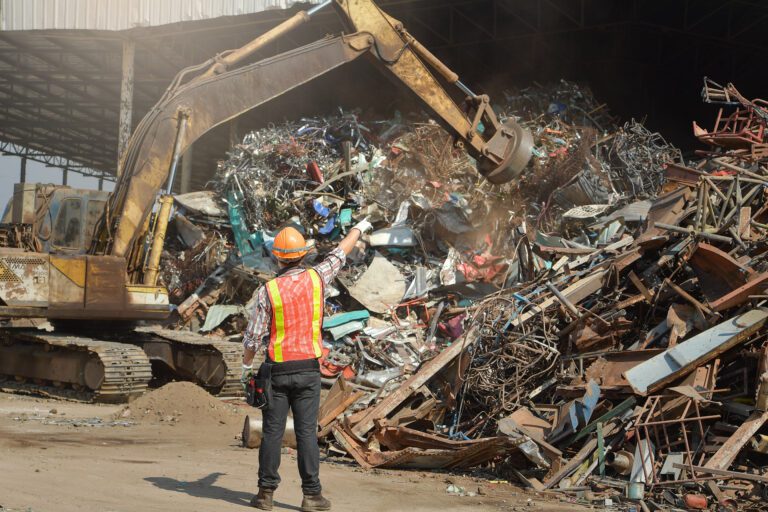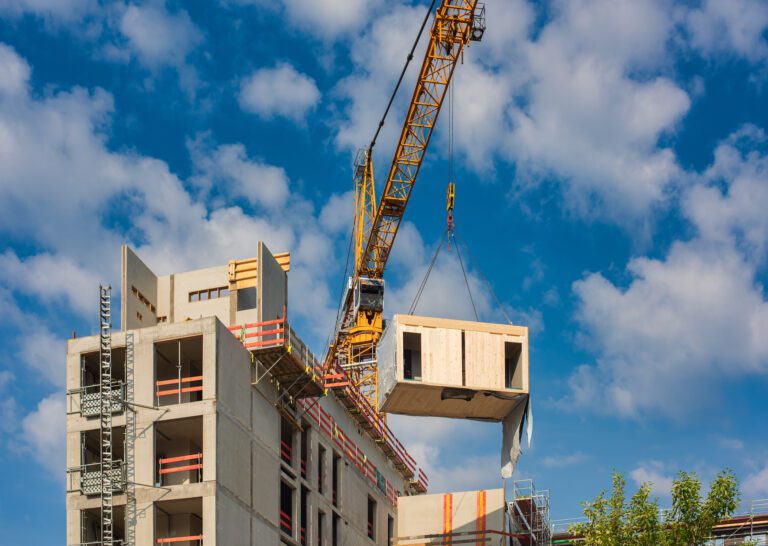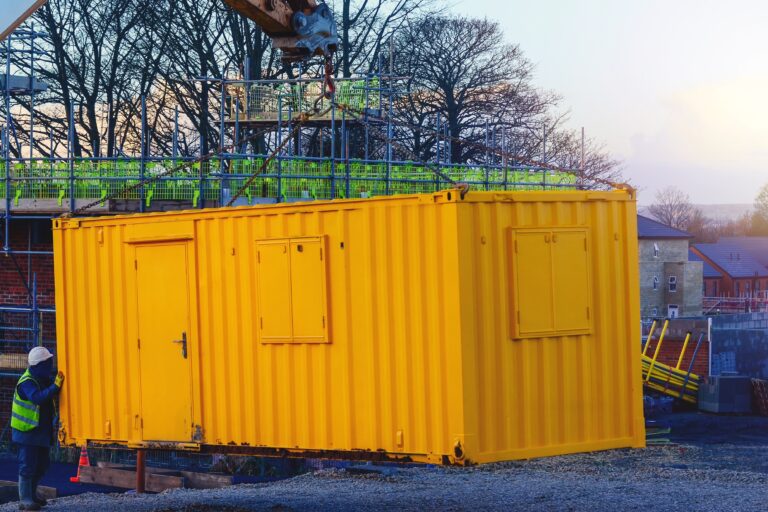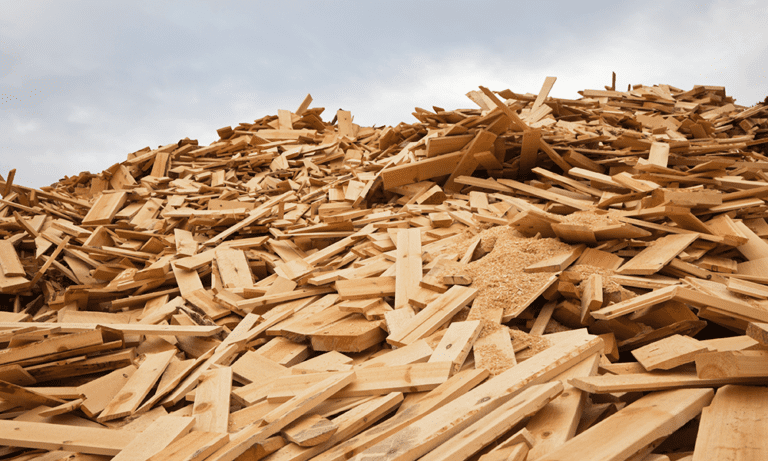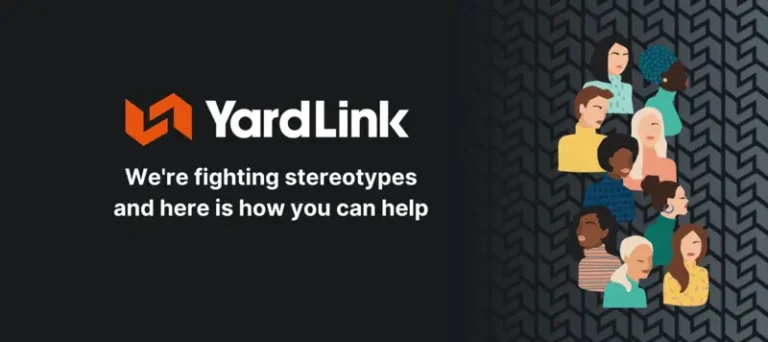1st July, 2021
Construction Waste Disposal: The Importance of Recycling
Recycling in construction is so vital, and so YardLink have created a guide to illustrate what waste can be recycled and how to do this effectively. Read on.
In any construction project, a variety of different materials are used. This includes, but is not limited to bricks, wall coverings, glass, plasterboards, plastic, and concrete.
This means there are a lot of opportunities for construction sites to recycle and contribute to a more sustainable planet. Construction Managers need to understand the importance of recycling and encourage this among their workforce. By making simple yet effective changes to your operations you can ensure more waste is correctly disposed of. Furthermore, recycling helps construction sites comply with environmental legislation and restrictions on what can be sent to landfill.
In this blog post we’ll identify why recycling construction waste is so important to reduce our carbon footprint. We’ll also look at what construction waste can be recycled to help construction workers separate materials on site.
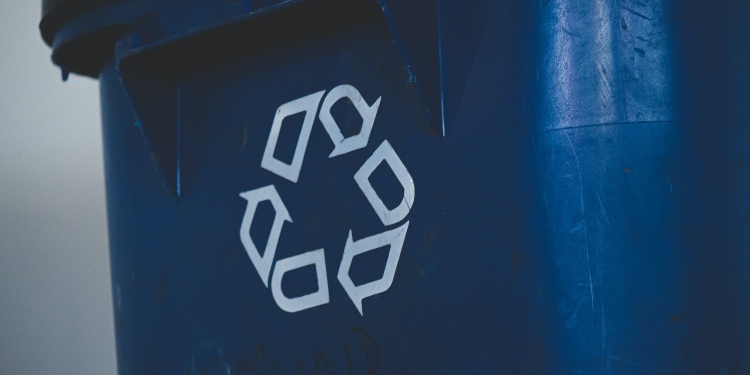
Why is Recycling Construction Waste Important?
To sustain the future existence of our planet, we need to be more aware of our impact on the environment.
Humans generate a lot of rubbish in our everyday lives and we need to think about how this waste is going to be correctly disposed of. Materials can take hundreds of years to decompose and cause huge environmental damage. This includes polluting nearby water sources and producing methane which contributes to the greenhouse effect.
Incinerating waste products is equally as damaging to the environment as the burning process releases harmful chemicals into the atmosphere. This results in the killing of wildlife and is further harming the planet.
If we want to sustain a healthy planet then we need to consider better ways of disposing of our rubbish. Recycling is key in the construction industry where large amounts of materials are used and disposed of on a daily basis.
What Construction Waste Can I Recycle?
When it comes to construction sites, there are vast amounts of different materials that are used depending on the project.
Just think about the number of construction projects that are completed and the different requirements of each.
Some buildings feature large amounts of glass, others have cladding or wood panelling, others are constructed using traditional brick. The list goes on.
This poses the question to construction workers about what materials can actually be recycled?
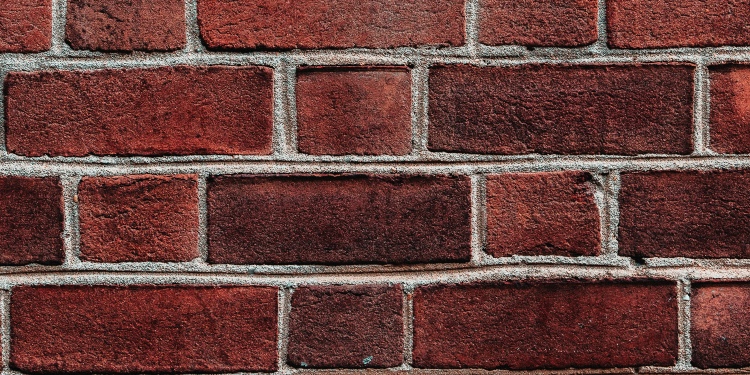
Bricks
You might be surprised to hear that bricks have a lifespan of 200 years.
You can use bricks that have been previously used in the construction of walls, paving, and infrastructure in your new building project. Alternatively, you could also sell them to companies who deal with reclaimed materials.
Brick waste is often a result of items that have been damaged during unloading, storing and cutting, or due to companies over ordering on the quantities they need.
Even if bricks are slightly damaged or less ‘perfectly’ shaped, they still have lots of uses and should not go to waste.
You could break them down to use them in landscaping projects or to produce new bricks and building blocks.
By recycling bricks you’re contributing to a more sustainable planet. A great deal of of carbon emissions are produced from extracting, producing, manufacturing, and transporting new building materials.
However, by using pre-made materials, you’re reducing a lot of these negative impacts whilst also cutting down on landfill waste.
Plastic
On a construction site, plastic is mainly used in the pipework, windows, wall coverings, and floorings.
However, a large amount of plastic also comes from workers’ lunches! The packaging of sandwiches, pasta pots, crisps, and drinks is a huge contributing factor to the amount of plastic waste.
There are a range of plastics that can be recycled including polystyrene, PVC, and polypropylene.
Reused plastic waste makes a fantastic building material as it’s strong, durable, lightweight, and waterproof, which are key properties when working in construction.
These properties enable plastic to be used in a range of different materials including roof tiles, concrete, indoor insulation, bricks, fences, and carpeting.
By finding a new home for used plastic you’re reducing the amount of waste that ends up in a landfill or floating in our beautiful sea.
The disposal of plastic is a global problem as it is being discarded on a worldwide scale. The environment is unable to keep up with the rate at which humans are disposing of this material which causes harm to living beings.
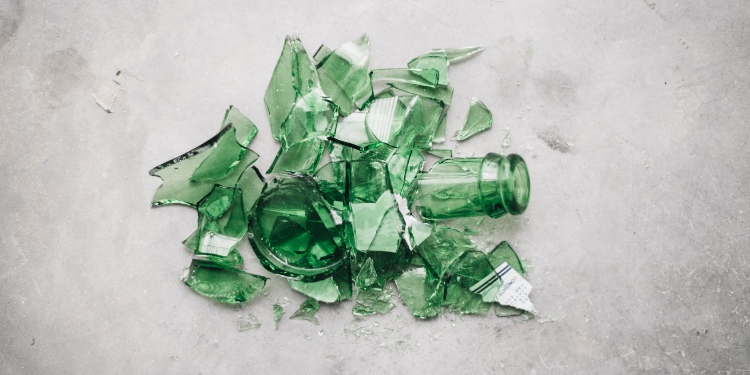
Glass
Most glass waste is produced from demolition and refurbishment projects.
Instead of throwing this glass away, it can be used in decorative materials and insulation as well as being a fluxing agent in the manufacturing of bricks.
Recovered glass is rarely reused into glass products but is often crushed together with other building materials.
In the construction industry, this has various uses, as when glass is finely crushed it can be used to replace sand. When it is less finely crushed, it can also be used to replace gravel meaning it is a very versatile material.
What’s more, if you don’t recycle glass it can be expensive to dispose of through unsustainable methods. This is a result of this particular material being heavy, which is another reason why you should find an alternative use for it.
As well as the cost impact, it will also take thousands of years for glass to decompose.
Wood
Sources of this type of waste in the construction industry includes pallets, crates, beams, windows, door frames, floorboards, and panelling. There tends to be large quantities of wood on a construction site so understanding the importance of recycling this material is key.
In fact construction sites are the biggest contributors to wood wastage overall.
The good thing is most types of timber can be recycled as long as construction workers separate the reusable wood from the low quality, contaminated wood.
At a recycling plant, the waste wood will be shredded down into various sizes depending on the end use of the material and its future use.
Large pieces of recycled wood are used to make different furnishings whilst small wood fibres can be used to make products such as animal bedding.
By recycling wood, by using a specific wood waste skip, you’re helping reduce the amount of trees that need to be cut down to produce this material. As a result this reduces water and air pollution and also redirects wood waste away from landfill sites.
Concrete
In the early stages of a construction site, paths, driveways, and other concrete structures are usually demolished to make way for a new building.
This leaves contractors and construction workers with large quantities of this dense material to dispose of.
Fortunately, concrete can be recycled and reused for lots of different purposes. In the recycling process, it is crushed down into small particles meaning it can be used in lots of the same ways as new materials including gravel.
Some of the uses of old concrete include driveways, walkways, landscaping, and other outdoor hard surfaces.
There are many environmental benefits to recycling concrete including reducing disposal and tipping fees, as well as cutting down on transportation costs. This is due to the fact that the old concrete can usually be reused close to the demolition site.
Using recycled concrete instead of other materials such as gravel reduces the need to mine and transport this material as you’re using something that already exists.
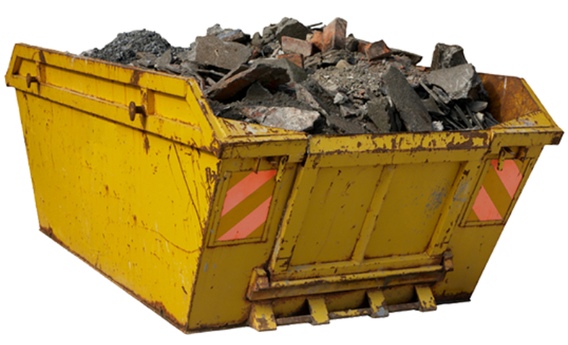
What is a Skip Used for?
Skips are a fantastic way of recycling waste and are an environmentally friendly way of disposing rubbish, especially when you’re working on a building or construction site you will have large volumes of waste to clear.
Skips can hold vast quantities of construction and demolition materials as well as garden waste and other types of litter. By hiring a skip it allows you to clear a lot of waste without making multiple trips. This contributes to improved site efficiency and is more cost effective as you can dispose of rubbish in one go.
Construction debris may come from a demolition site or building renovation where large quantities of materials are used and disposed of.
At YardLink we provide a range of skips in different sizes to suit the needs of your project. Our skip hire services offer an effective solution when it comes to clearing your construction site, whether you’re carrying out a kitchen refit or completing a loft conversion.
From 4 yard skips to 16 yard variants, we have your project covered. And with a nationwide network of trusted, skip hire companies, you can be confident you’re receiving the best service.
Give us a call or send us an enquiry to take advantage of our products.

Is Skip Hire Environmentally Friendly?
Skip hire is an environmentally friendly way of disposing of large quantities of rubbish.
More and more skip hire companies understand the importance of recycling different materials and products to avoid them ending up in landfill.
By sorting through waste and allocating it to the correct recycling plant, skip hire companies are contributing to a healthier environment. They will try to recycle as much waste as possible but there are some stages the waste must go through first.
- Sorting – Skips carry a whole range of materials, especially in construction where lots of items are used and disposed of. At this stage of the process, the items are taken back to the suppliers site where they go through and separate items into different categories.
- Treatment and Processing – This essentially prepares items for the final recycling stage. Each waste category is treated by type to ensure items are ready for their intended use. For example, building rubble will be crushed and soiled with be screened to remove large lumps and pieces of debris.
- Disposal – At this stage, processed waste can be recycled. Depending on the item, it will be sent to specialist companies for them to make different products. For example, metal can be shipped to manufacturers to be reused and timber can be processed for a range of different applications.
At YardLink, our range of skips have plenty of space!
By offering different sized variants, you can choose the best option for your construction site. Our 8 yard skip holds between 60-80 black bags so there is plenty of room for unwanted construction materials.
Plus, we can even deliver your skip on the same or next day so you’re not waiting around or delaying the project.
We also provide skip covers and lights to ensure your skip is protected from different weather conditions. A skip cover also keeps your skip safe especially if you have pieces of broken debris which are stacked high. This poses a risk to the public as debris could fly out and be dangerous.
What Can I Put into a Skip?
When hiring a skip, you need to be aware of what can and can’t go inside. Although skip hire is an effective way of clearing waste there are limitations when it comes to filling up your skip. The Environment Agency has also recently withdrawn regulatory position Statement 250 which carries implications for how construction projects manage their environmental responsibilities.
People often fall under the misconception that every piece of waste is suitable for a skip and just throw it all in. However, there are some hazardous items that must never be disposed of in this way.
This is because these items have been classified by health and safety regulations to be harmful to the environment.
Before arranging a quote and hiring a skip for your project you need to understand what is and isn’t allowed to be thrown inside.
Items which should never go in a skip include TV’s, computer monitors, asbestos, tyres, fluorescent tubes, fridges, paint tins, plasterboard, batteries, gas cylinders, oil, petrol, and medical waste.
How to Choose a Skip
When it comes to hiring a skip there can be lots of things to consider.
For example the nature and size of your project is important as this will determine what kind of skip you need. There’s also the option of roll on roll off skips which require wider access on site but hold a lot more waste than a traditional, general waste skip. This is an ideal option for a construction manager who has large amounts of waste to dispose of.
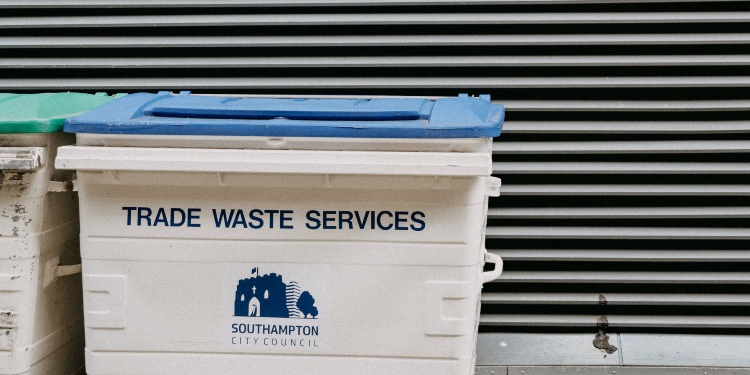
Construction Waste Disposal: The Importance of Recycling
Construction sites produce large amounts of waste that needs to be correctly disposed of.
From glass, bricks, plastic, wood, and concrete, these sites rely on a variety of different materials when completing projects. Whether you have a major construction contract or are undertaking a large refit, hiring a skip is an important part of site waste management.
This provides contractors with a huge opportunity to protect the environment by recycling unwanted items that would otherwise end up in landfills.
So next time you’re disposing of materials, consider the environmental impact of your choices and be more conscious about the need to recycle.
Skip hire offers a cost effective solution when it comes to recycling and there are lots of different options and sizes to suit the needs of your project.
YOU MIGHT ALSO BE INTERESTED IN

